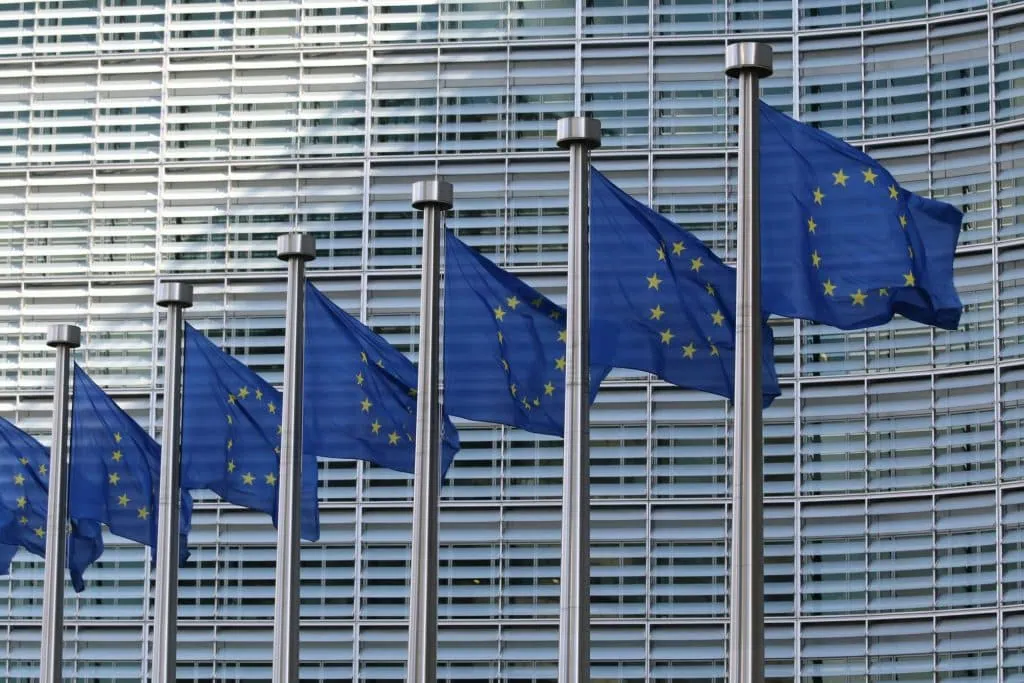
Working together toward climate neutrality
In a new short video, the Kopernikus project Ariadne shows why research into climate policy measures is so important for achieving climate neutrality.
 MheeP / Adobe Stock
MheeP / Adobe Stock Europe must provide even better incentives for renewable hydrogen
Ariadne researchers have analysed the EU framework for the ramp-up of hydrogen. This energy carrier, produced with electricity from renewable sources, is intended to decarbonise sectors that are difficult to electrify, such as the chemical and steel industries.
 Adobe Stock / Dina
Adobe Stock / Dina Staying the course in turbulent times: A dialogue with the Ariadne Project on future EU energy and climate policy
The Ariadne project provides the results of the three-day event on EU climate and energy policy (9-11.12.2024) in Brussels.
 Adobe Stock / studio v-zwoelf
Adobe Stock / studio v-zwoelf Under scrutiny: How EU diplomacy handled the design and launch of the Carbon Border Adjustment Mechanism
The European Union’s outreach to third countries during the introduction of the Carbon Border Adjustment Mechanism was rigid and uncoordinated, new Ariadne analysis has found. Researchers investigated how the EU organized its diplomacy to counter trade concerns during the ...
 Unsplash / Guillaume Perigois
Unsplash / Guillaume Perigois Low Carbon Hydrogen: strategic approach missing in EU’s regulatory framework, but crucial to ensure climate protection
The use of low carbon hydrogen based on non-renewable sources is considered as a transitional solution for the market ramp-up of renewable hydrogen. A new Ariadne paper shows that a strategic approach clarifying the role of non-renewable low carbon ...
 ebenart
ebenart Knowing what works: How to improve the evaluation of existing climate protection measures
In order to assess the success or failure of strategies to reduce emissions in the building sector, reliable data, evaluation of all policy programs, good timing of evaluations and their inclusion in political reform processes are necessary - foundations ...
 Arno Senoner / Unsplash
Arno Senoner / Unsplash Options for a targeted reform of the European climate and energy Governance Regulation
The European Governance Regulation is the pivotal procedural control element for achieving the EU's 2030 energy and climate targets. However, since it came into force in 2018, it has been seen as deficient. Ariadne experts now discuss the reform ...
 Markus Spiske / Unsplash
Markus Spiske / Unsplash Conference: Shaping EU climate and energy policy
From climate clubs and the future design of electricity markets to EU Governance, carbon pricing instruments and social compensation – during the latest ‘Ariadne in Brussels’ event that took place from December 5-8, Ariadne researchers gave insight into their ...
 Denis Yevtekhov / Adobe Stock
Denis Yevtekhov / Adobe Stock Effective climate governance through strong climate institutions
In a new Ariadne report, researchers from the Hertie School analyse and compare climate institutions in Germany, the United Kingdom, Sweden, and Australia. They draw on this analysis to offer reform options for German climate institutions in the context ...
 Drew Dau / Unsplash
Drew Dau / Unsplash Climate policy in check – an assessment framework for the design of policy pathways
Germany is not “on track” to meet its climate targets by 2030 and 2045. To comply with the Climate Protection Act, the framework conditions should be designed in such a way that businesses and society change their actions and investment ...


